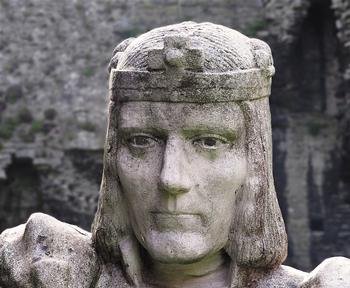Quiz Answer Key and Fun Facts
1. Edward, the Black Prince was born on June 15, 1330, in Oxfordshire, England, on what estate? (You may identify the name of the estate with a famous farm in upstate New York.)
2. During which war with France did Edward, the Black Prince gain prominence as a soldier and military leader?
3. It was said that The Black Prince's father, King Edward III of England, was so impressed with his son's performance as guardian of the kingdom, that he was knighted at a relatively young age. How old was Edward, the Black Prince when he received his spurs?
4. Thomas de Beauchamp, 11th Earl of Warwick, was the guardian of Edward, the Black Prince at the Battle of Crécy.
5. Edward, the Black Prince became prince of an area in France that originally came to the family through his great-great-great grandmother, Eleanor, at the time of her marriage to Henry II. What was this area?
6. As the heir to the throne of England, what title was Edward, the Black Prince given at the age of thirteen?
7. Edward, the Black Prince was one of the founding members of a group that is considered to be the highest order of chivalry in England. What was the group called?
8. Edward, the Black Prince was the first English duke.
9. Edward, the Black Prince told us a story about finding the body of King John I of Bohemia after the Battle of Crécy. King John fought bravely in spite of his blindness, and Edward decided to adopt the dead king's shield and motto, "Ich Dien", as his own. Probably the only English motto in (medieval or modern) German, what does "Ich Dien" mean?
10. I was so disappointed when it was time for Edward, the Black Prince to continue on his journey to help Don Pedro of Castille. I hope to meet Edward's beautiful new Lady Wife on our next visit. What was her name?
Source: Author
ponycargirl
This quiz was reviewed by FunTrivia editor
bloomsby before going online.
Any errors found in FunTrivia content are routinely corrected through our feedback system.

